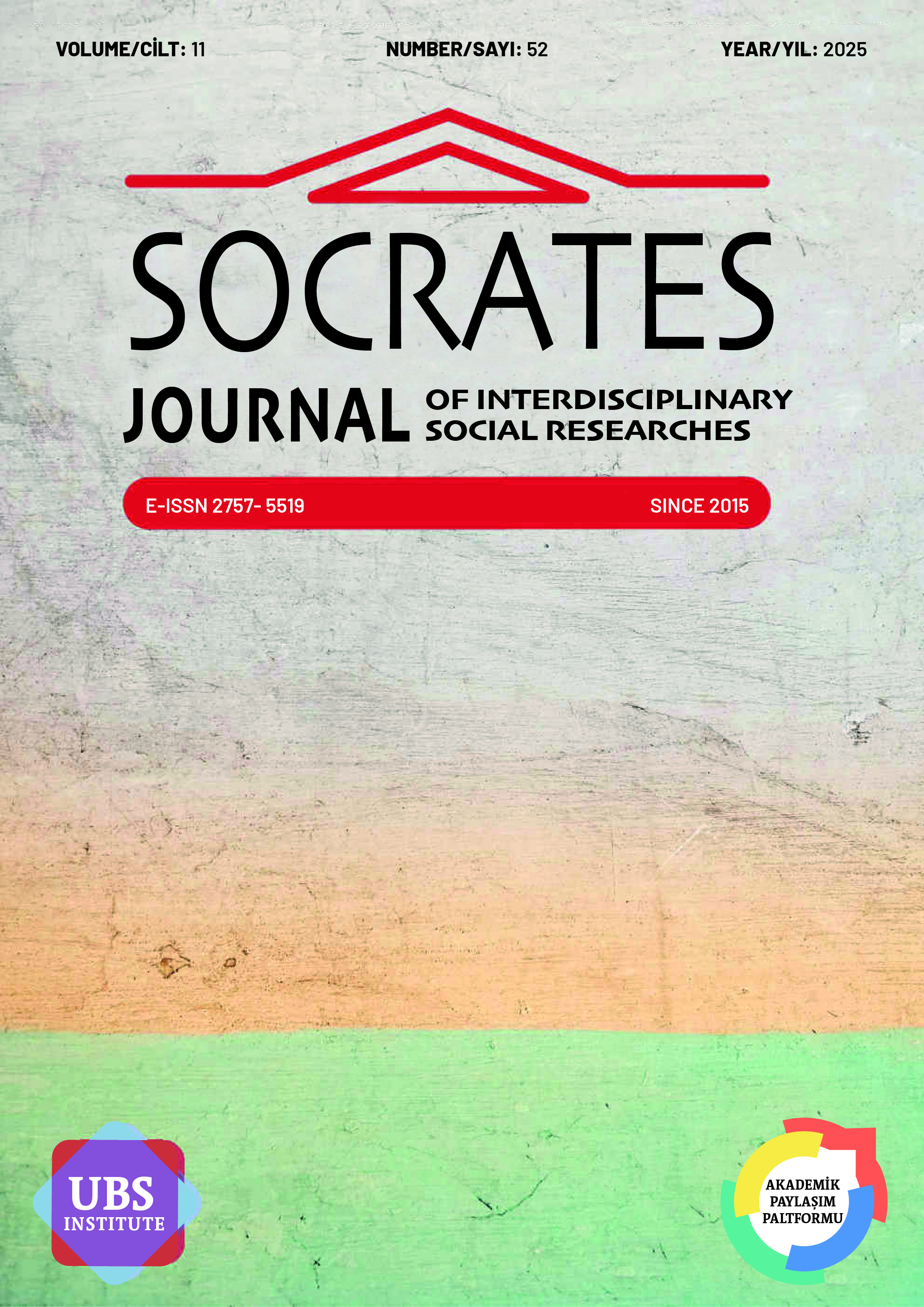SAĞLIK TURİZMİ KAPSAMINDA DİVRİĞİ DESTİNASYONUNUN SU KÜLTÜ
WATER CULT OF DİVRİĞİ DESTINATION WITHIN THE SCOPE OF HEALTH TOURISM
DOI:
https://doi.org/10.5281/zenodo.15316275Anahtar Kelimeler:
Sağlık Turizmi, Divriği, Balneoterapi, Şifalı SuÖzet
Sağlık turizmi kapsamında balneoterapi (su ile şifalanma), günümüzde modern tıbbın hastalıkların tedavisinde kullandığı protokollere alternatif olarak tercih edilen bir tür tedavi yöntemidir. Dünyanın çeşitli destinasyonlarında bulunan ve şifalı olduğuna inanılan kaynakların, içmelerin, kaplıcaların ve pınarların kimi hastalıkların tedavisinde kullanılması geleneği yüzyıllardan beri devam etmektedir. Bu çalışmanın amacı, birçok turizm türünün gerçekleşmesi için gerekli zemine sahip olan Divriği destinasyonunun sağlık turizmi kapsamında da belirli oranda bir potansiyele sahip olduğunu belirtmektir. Divriği destinasyonunda, çoğu kırsal alanlarda olmak üzere şifalı olduğuna inanılan birçok su kaynağı vardır. Hastaların uğrak yeri olan bu suların şifa gücü, ziyaret eden insanların suyun şifalı olduğuna inanmaları temeline dayanmaktadır. Sağlık turizmi, dünyada olduğu gibi ülkemizde de önemli bir turizm türü olmaya devam etmektedir. Sivasın Divriği ilçesinin de sahip olduğu bu potansiyeli kullanması ile ilçe turizm gelirine olumlu yönde katkı sağlayacağı düşünülmektedir. Şifalanma, huzur bulma veya adağın yerine gelmesi gibi çeşitli sebeplerle ilçeye gelen turizm tüketicilerinin devamlılığının sağlanması ve sürdürülebilir turizm hedeflerinin yerine getirilmesi açısından gerek kamu gerekse özel sektörün ilçe turizminin yol haritasını etkileşimli ve koordineli olarak bir an önce belirlemeleri gerekmektedir.
Referanslar
Bai, R., Li, C., Xiao, Y., Sharma, M., Zhang, F., & Zhao, Y. (2019). Effectiveness of spa therapy for patients with chronic low back pain: an updated systematic review and meta-analysis. Medicine, 98(37), e17092.
Botoș, A., Stăncıoıu, A. F., Radu, A. C., & Pârgaru, I. (2017). Youngsters’ opinions on health, health tourism and balneotherapy tourism. International Journal of Academic Research in Economics and Management Sciences, Vol. 6, No. 2.
Brito, M., & Silveira, L. (2024). Water, health and well-being, and tourism: analysis of a triangular relationship in Portugal. Tourism Recreation Research, 1-11.
Chang, L., & Beise-Zee, R. (2013). Consumer perception of healthfulness and appraisal of health-promoting tourist destinations. Tourism Review, 68(1), 34-47.
Carbajo, J. M., & Maraver, F. (2018). Salt water and skin interactions: new lines of evidence. International journal of biometeorology, 62, 1345-1360.
Carmen, I., Alexandrina, S., & Iuliana, C. (2016). Coordinates of developing the balneary tourism. Management Strategies Journal, 31(1), 308-316.
Connell, J. (2013). Contemporary medical tourism: Conceptualisation, culture and commodification. Tourism management, 34, 1-13.
Fioravanti, A., Karagülle, M., Bender, T., & Karagülle, M. Z. (2017). Balneotherapy in osteoarthritis: facts, fiction and gaps in knowledge. European Journal of Integrative Medicine, 9, 148-150.
Gáti, T., Tefner, I. K., Kovács, L., Hodosi, K., & Bender, T. (2018). Erratum: Correction to: The effects of the calcium-magnesium-bicarbonate content in thermal mineral water on chronic low back pain: a randomized, controlled follow-up study. International Journal of Biometeorology, 62(5), 907-907.
Gutenbrunner, C., Bender, T., Cantista, P., & Karagülle, Z. (2010). A proposal for a worldwide definition of health resort medicine, balneology, medical hydrology and climatology. International Journal of Biometeorology, 54, 495-507.
Hall, C. M. (2011). Health and medical tourism: a kill or cure for global public health?. Tourism review, 66(1/2), 4-15.
Hritz, N. M., Sidman, C. L., & D’Abundo, M. (2014). Segmenting the college educated generation Y health and wellness traveler. Journal of Travel & Tourism Marketing, 31(1), 132-145.
Illich, I. (1975). Némésis médicale (Vol. 9, pp. 351-364). Paris: Seuil.
Ivanišević, G. (1999). Marine remedies of the island of Lošinj-the basis for the development of health and spa tourism. Turizam, 47, 132–149.
Kušen, E. (2002). Health tourism. Tourism, 50, 175-188.
Laesser, C. (2011). Health travel motivation and activities: insights from a mature market-Switzerland. Tourism Review, 66(1/2), 83-89.
Matsumoto, S. (2018). Evaluation of the role of balneotherapy in rehabilitation medicine. Journal of Nippon Medical School, 85(4), 196-203.
Milićević, S., & Jovanović, D. (2015, October). Wellness tourism–competitive basis of European health tourism destination. In DIEM: Dubrovnik International Economic Meeting, 2(1), 851-863.
Moreno-González, A. A., León, C. J., & Fernández-Hernández, C. (2020). Health destination image: The influence of public health management and well-being conditions. Journal of Destination Marketing & Management, 16, 100430.
Morer, C., Roques, C. F., Françon, A., Forestier, R., & Maraver, F. (2017). The role of mineral elements and other chemical compounds used in balneology: data from double-blind randomized clinical trials. International journal of biometeorology, 61, 2159-2173.
Oestigaard, T. (2017). Holy water: the works of water in defining and understanding holiness. Wiley Interdisciplinary Reviews: Water, 4(3), e1205.
World Tourism Organization & European Travel Commission (WTO & ETC). Exploring Health Tourism-Executive Summary; UNWTO: Madrid, Spain, 2018.
Yang, J. Y., Paek, S., Kim, T., & Lee, T. H. (2015). Health tourism: Needs for healing experience and intentions for transformation in wellness resorts in Korea. International Journal of Contemporary Hospitality Management, 27(8), 1881-1904.
İndir
Yayınlanmış
Nasıl Atıf Yapılır
Sayı
Bölüm
Lisans
Telif Hakkı (c) 2025 Socrates Journal of Interdisciplinary Social Researches

Bu çalışma Creative Commons Attribution 4.0 International License ile lisanslanmıştır.


